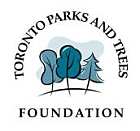
Pages in this Folder:

Related Folders:
See also Department Site Map
This website was developed in 2001 thanks to a grant from the Toronto Parks and Trees Foundation.

Notice: This web site is an information post and a forum for the community that uses the park, and to some degree for the surrounding neighbourhood. The editor of the web site reserves the right to post parts or all of any letters sent to the web site. If you do not want your letter posted, please let us know when you e-mail us, and we won't post it.
Comments?
For the basics, see
- Website & Privacy Policies
- How To Get Involved
- The Role of the Park
Search options:
Department Site Map
Custodians:
posted September 4, 2004
Lessons Learned from the Park Debt (September 2004)
The Bigger Picture
When the many people who are friends of the park first found out that the park was in arrears, lots of us thought up fundraising ideas. But just the thought of some of the effort that would be needed made us tired, particularly because this was another very active summer in the park and some of us were already tired. In the end, it seemed that directly asking people to give between $25 and $50 was the best way to get out of our hole. That turned out to be workable. However, it's not really a way to run a public park in the long run - public space is meant to be tax-funded.
The trouble is, over the past eleven years this park grew from being a bit of an orphan, and a convenient neighbourhood short-cut to the mall, into a community-centre-without-walls. But as more people began coming to the park for open-air enjoyment of one kind or another, city staffing followed only reluctantly. The availability of food in the park has grown, and that means more income is available to run the park as well. However, the food income has become so important to running the park now that any threat to the food operations (and there are undoubtedly more regulatory troubles to come) will endanger what goes on here. To put some numbers on this:
Total city recreation wages paid at Dufferin Grove Park Jan.1, 2004 to Aug. 29, 2004: $71,382.34
Total cash wages for additional recreation and maintenance activities paid at Dufferin Grove Park (mainly from food income) Jan.1 to Aug.31: $46,455.73
So the real cost of running the park (not counting the city maintenance, as far as it goes) will be greater than $120,000 by the end of the year. Compared to community centres with walls, that's not bad. For example the two nearest centres to our park, Wallace-Emerson and McCormick, cost nearly $1 million a year (in tax money) to run, despite their income from permit fees. (The number of people who use a built centre and the number who use a lively park like ours is similar, with the park sometimes coming off slightly better.) So, running a park like a community centre could be seen as a bargain.
The city has a heavy financial burden in running all its community recreation centre buildings. For one thing, there are so many. Within 5-15 minutes by bike from our park, in various directions, there are six community recreation centre buildings, and there's strong pressure to build a seventh (Wabash). The cost of staffing and maintaining all these buildings makes it very hard for the city to find enough money for the simpler operations, like our park. City managers struggle and plan and have meetings and set "productivity" targets. And as the centres turn more and more to "pay per use," the community public space element gets weaker. Whole sections of community centres can be pre-empted for paid permits: for example, movie shoots (Trinity Bellwoods), or after-hours clubs (Masaryk-Cowan) or private swimming-pool birthday parties (Wallace Emerson). And still the centres are far from covering their costs. City planners proliferate, studies and repeat studies are launched, and still it's undeniable: the city is in a pickle. And therefore, so is our park.
The solutions are not simple...
When our park budget crisis became known, some folks waggled their eyebrows a bit. Surely this was a sign that we should now do the right thing, get a board with an executive, have proper meetings with proper protocol? At this park there are so many things done on a handshake, so many surprises, so much informal talk at the sand pit or the oven. Surely we would not have got into this trouble if we'd been more organized?
Then again, perhaps we would not have had so much to get in trouble about, because our park might have stayed more of the orphan it was formerly. The city is rich in defunct advisory groups that foundered before the ink was dry on their constitutions. Dufferin Grove Park is rich in friends, i.e. over the years there has been a gradual accumulation of people who are friendly to the park, and friendly to one another at the park. So here's an interesting test - can our park and its friends help to untangle the knots that the city has tied itself in, not only for our park, but for other parks as well? This question will hopefully be part of the conversations that swirl around at the park during the next season. If anybody hears anything good on the subject, please let us know for the newsletter - contact editor@dufferinpark.ca, or call 416 392-0913 and leave your name and number, or hunt up the park staff and share your knowledge with them).


 Printer friendly version
Printer friendly version